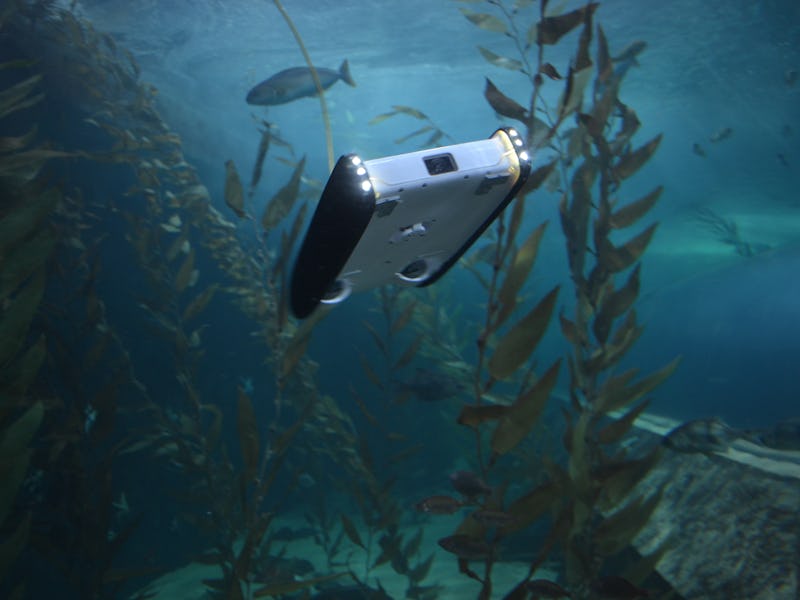OpenROV Uses Consumer-Friendly Underwater Drones to Explore the Deeps
If aerial photography isn't your thing, you can take your drone to the lake.

Exploring shipwrecks is one of the most popular and exciting parts of scuba diving. But it’s dangerous, and takes a lot of training, preparation, and a serious commitment to the hobby. Small, lightweight commercial drones have opened up the skies to aerial photography, but until recently there hasn’t been a commercially-viable equivalent for exploring underwater environments.
Sure, high-tech humanoid robots have started making diving trips with human partners into shipwrecks and exotic locations, and government autonomous submersibles investigate sunken cargo ships, but for the casual enthusiast, there hasn’t been an option for recreational exploration outside of a snorkel or diving gear. Enter the OpenROV, an open-source drone project by a small Berkeley-based startup.
Its latest model, Trident, is essentially the same as a quadcopter — it’s a mobile platform, easy to drive (or fly) with a simple controller, but it goes underwater. Unlike aerial drones, it’s connected to its controller by a thin cable, and it looks a bit like someone chucked an Xbox in the lake, but it accomplishes about the same purpose — its camera gives the pilot eyes where they ordinarily could not see. The New York Times went out with OpenROV as it sent Trident down to look for the wreck of the S.S. Tahoe, an early 20th century steamer scuttled in California’s Lake Tahoe in 1940.
Check out some video from Trident’s first dive on the ship:
It’s not going to win any drone speed records, but it does manage about 4.6 miles per hour underwater with a two-hour battery life. It’s easy to hook up to a standard gaming controller, as well, and can operate as deep as 328 feet down, which is twice the depth most scuba divers can get down to.
The Trident isn’t cheap — units will retail at about $1,499, starting this fall — but the creators aren’t being stingy with their achievement. The drone’s source code and hardware design are all available for free on their website, so an experienced enthusiast or programmer could easily build their own underwater drone using OpenROV’s design.
Its YouTube channel even has detailed videos for assembling different versions of their underwater drone. Either way, underwater photography and videography could quickly become much easier to do via drone than actually waterproofing a camera and figuring out how to stay down for long enough to get good footage. Speaking of which, here’s the Trident’s second dive down to the Tahoe. Enjoy.